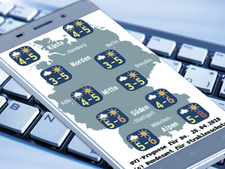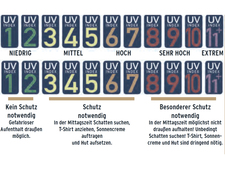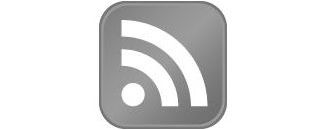-
Topics
subnavigation
Topics
Electromagnetic fields
- What are electromagnetic fields?
- Static and low-frequency fields
- Radiation protection relating to the expansion of the national grid
- High-frequency fields
- Radiation protection in mobile communication
Optical radiation
Ionising radiation
- What is ionising radiation?
- Radioactivity in the environment
- Applications in medicine
- Applications in daily life and in technology
- Effects
- What are the effects of radiation?
- Effects of selected radioactive materials
- Consequences of a radiation accident
- Cancer and leukaemia
- Genetic radiation effects
- Individual radiosensitivity
- Epidemiology of radiation-induced diseases
- Ionising radiation: positive effects?
- Risk estimation and assessment
- Radiation protection
- Nuclear accident management
- Service offers
-
The BfS
subnavigation
The BfS
- About us
- Science and research
- Laws and regulations
- BfS Topics in the Bundestag
- Links
Enjoying the sun safely: UV-Newsletter provides information on the risk of sunburn
Year of issue 2018
Date 2018.04.26
Date 2018.04.26
 The UV-Newsletter sends the forecast directly into your emailbox
The UV-Newsletter sends the forecast directly into your emailbox
At last – spring is here! The long winter, which was strong until the very end, finally said good-bye; already in April the first warm, summery days enticed people to go outside. But careful: With the stronger solar radiation the UV irradiance increases, too, and thus the risk of developing skin cancer. If you want to protect yourself, you ought to bear in mind the UV index. The three-day-forecast of the Federal Office for Radiation Protection (BfS) assists you with this: Just in time for the beginning outdoor pool season, the BfS UV-Newsletter emails information on the current UV index three times a week.
UV index provides information on the risk of sunburn
The UV Index is a measure of the highest sunburn-effective UV radiation level caused by the sun on a horizontal area during one day – i.e. under a cloudless sky during high sun. This measure has been standardised all over the world. The UV index is given in whole numbers. The higher the sunburn-effective UV irradiance, the higher the UV index; the higher the UV index, the faster a sunburn may occur in unprotected skin and the more one should protect oneself against solar radiation.
"It has been scientifically proven that sunburns - in particular during childhood - enhance the risk of developing skin cancer,"
BfS spokesman Jan Lauer says. Equally risky is exposure to very high UV radiation levels - e.g. on holidays - but also high UV radiation taken up over a lifetime. It is therefore all the more important to expose oneself to very high UV radiation not at all. The BfS forecast helps planning your day in such a way that you can safely enjoy the sun.
The UV-Newsletter provides detailed information on the UV index on a regular basis
The BfS emails the UV-Newsletter every Monday, Wednesday, and Friday. The Newsletter contains a three-day-forecast for ten forecast areas in Germany, from the North Sea and Baltic Sea coast to the Zugspitze. The forecast also takes into consideration whether to expect sunshine or cloudier sky. Two values give the lowest and highest UV index expected for that day. "Thus it is possible for people to prepare better for the clouds breaking occasionally and the risk of sunburn clearly increases,"
Jan Lauer says.
Since 2012, the UV-Newsletter has been distributed on a regular basis during the summer season. Originally conceived as supplement to the weather forecast in newspapers and radio stations, more and more interested citizens have subscribed to the newsletter over the years. Among the subscribers are, for example, numerous kindergartens in Germany. That is particularly pleasing, as especially for children sun protection is very important.
Interested citizens can subscribe to the UV-Newsletter at www.bfs.de/uv-newsletter.
How do I protect myself?
Protection is necessary from a UV index of 3. From a UV index of 8, protection is absolutely necessary. The best UV protection is ensured by the various measures in the following order:
- Avoiding strong sunlight
- Putting on clothes
- Using sunscreen
- Protecting eyes
Especially around noon one should seek out the shade. From a UV index of 8 one should stay indoors, if possible. Outside, clothes, shoes, and headwear are the simplest possibilities to provide effective UV protection. Basically, the following applies: The more densely woven, the better. All uncovered skin areas should be creamed up well and repeatedly with a protection factor of minimum 20 for adults and minimum 30 for children. The eyes are best protected with sun glasses that are tight at the sides and whose glasses filter UV radiation up to 400 nanometres (marked "UV 400").
At www.bfs.de, the BfS provides information on UV radiation and on how to protect oneself effectively against it.
State of 2018.04.26




